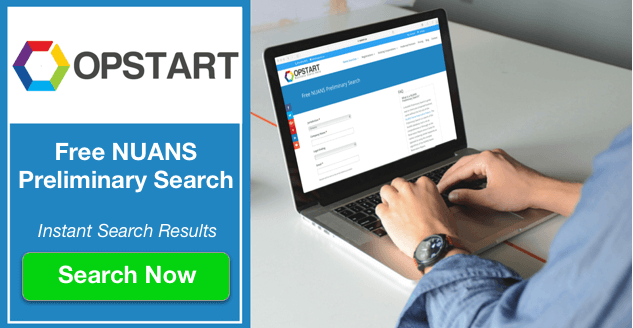How To Use Demographics To Build A Marketing Profile

Your business is only as good as the marketing strategies you implement. This is why it’s important not to put any marketing plans in motion without first creating a marketing profile.
Understanding your audience is key to ensuring your marketing message attracts the attention of, and converts, your target customer. However, if your audience is overly broad, then you risk your message falling on deaf ears.
A highly-targeted campaign is the key to success. But to achieve this you’ll need to take the time to thoroughly research your intended market.
A marketing profile will provide you with all the necessary details about your customers to create content for your campaigns. With a tailored message, you can connect with your prospects and increase the likelihood of conversions.
Let’s take a look at the power of demographics and how you can use it to create a winning marketing profile.
An Overview of Demographics and Marketing
The first thing any business owner should do before launching their company is become familiar with their audience. And this means knowing the demographics of your target customer.
This is a major component of any business plan. Banks aren’t likely to fund a business if they don’t have any idea of who they’re going to market their products and services to.
Demographics
Knowing the demographics of your customers means learning about their:
- Age
- Marital status
- Shopping habits/behaviours
- Number of children
- Gender
- Geographical area
- Income
- Education Level
- Leisure activities
- Means of transportation
- Purchasing power
All of this data will help you create a marketing profile.
The more you know about your prospects, the easier it will be to touch on their pain points, desires, and needs. Your marketing should speak directly to them so they’re more willing to click on your ads, browse your site and consider your products or services.
Marketing
There are certain products and services that cater to different audiences. For example, you may have one product that attracts stay-at-home moms and another that relates to business professionals.
The marketing messages you create for each product/service should match that particular audience. The language used and the pain points you touch on should relate directly to that consumer.
For instance, a cleaning product for a stay-at-home mom is marketed as the solution for keeping children from spreading germs. Yet, for a professional, it would cover how the product can keep the workplace clean and presentable for clients. Or to maintain the quality of high-end oak desks.
Everything plays a role in how you market to customers – their behaviours, location, and lifestyle. All of this has to be taken into consideration in order to develop the best campaigns possible.
Applying Demographics to a Marketing Profile
When you know the demographics of your target customers, it’s time to implement it into your marketing profile and apply it to your marketing plan.
In doing so, you can avoid costly mistakes. For instance, targeting the wrong prospects with the wrong messages. If your marketing collateral turns off prospects or doesn’t resonate with them, then you can bet they’re not becoming customers.
Where Do You Find Demographics Information?
Now, there are many ways you can find demographic information about your customers. The old-fashioned way is to head over to the Statistics Canada and Bureau of Labour Statistics websites.
You can also go to your local chamber of commerce to obtain demographic information for your city, province or territory.
Another option is to use Google Analytics and social media analytics tools to identify your target audience. These provide all sorts of insights into the demographics of your visitors and followers.
Reasons to Use Demographics in Your Marketing
It’s time to delve a little deeper into why you should use demographics in your marketing. And how it can help your business financially in the long-term.
The categorization of your customers will help you to segment your marketing campaigns. In doing so, you ensure you’re catering to each customer. Personalized experiences are what today’s consumers are looking for.
Now, let’s review some of the reasons you need to use demographics to create a marketing profile.
Build a Solid Base of Loyal Customers
Since consumers enjoy a personalized experience with brands, you can tailor your marketing strategies to be more personal. The understanding you have, thanks to your marketing profile, will allow you to deliver this.
For instance, you’ll be able to select the right channels to display your marketing. You may want to target your younger audience on social media platforms like Facebook, while you use email marketing for your baby boomer customers.
Reduce Marketing Costs
Spending thousands of dollars on marketing that doesn’t work is like throwing money down the toilet. If no one’s paying attention to your marketing or converting, then your budget will quickly diminish.
Marketing requires a return on investment to flourish. With a marketing profile decked out with detailed personas and demographics, you can avoid this issue. All of your marketing will be highly-targeted and seen by the audiences that matter most to your brand.
Find New Opportunities
Sometimes research reveals an entirely different market you should be targeting. Most businesses have an ideal customer they want to pursue. Yet, when you begin doing demographic research, you might see an audience in an unexpected place.
Develop Unique Selling Points
Every customer group is different. Being able to introduce scenarios and benefits that relate to them is key.
If you can do this well, then you’ll maintain a steady stream of highly-targeted traffic to your website and business. In other words, your ROI will increase substantially.
Boost in Sales
Ultimately, this is a top priority of every business. Revenue is the key to sustainability, growth, and expansion. A marketing profile will help you create winning campaigns that convert.
Creating a Marketing Profile with Demographics
Next, let’s look at how you can use demographics to tailor your marketing. To help find your ideal customer, you can ask questions like this:
- Is my product or service expensive or affordable to the masses?
- Is my product or service only for men or women?
- Is my target customer interacting with us online or at a physical location?
This will further help you identify who you should target.
Identifying Psychographics
Marketing extends beyond physical demographics to the psychological realm. Psychographics consist of the behaviours and patterns of your target demographics.
For example, the likes and dislikes they have. The values your audience has and the lifestyles they lead. It’s important to note which features of your product or service attracts your customers the most.
When do they decide to purchase your product or service and how do they use it?
Choosing the Best Channels
The data you collect about your target audience will help identify the best platforms and channels to reach them.
For example, if you have quick-moving consumer goods vs luxury goods, Facebook is the ideal place to market to younger users.
However, if you’re primarily a news source, then Twitter is the better option. Now, let’s take a look at the various demographics and how you can better reach them.
Generation Z
This generation consists of consumers 21 and younger. In this group, you want to focus on quality and authenticity. Generation Z consumers are loyal to brands that can deliver both.
And the best way to reach them is through social media. Email doesn’t really matter to this audience, but if you can personalize them well, then you may trigger good results.
Millennials
This generation consists of consumers between 22 and 37. For them, personalization and loyalty are very important factors when selecting brands. It’s the perfect group to target with loyalty reward programs.
Many millennials claim loyalty points fueled their most recent purchases.
And if you can offer quality at an affordable rate, even better. The best way to reach this audience is to use personalized marketing messages and communications.
Generation X
In this group, you’ll find consumers aged between 38 and 52. For this generation, it’s all about quality, deals, and convenience. Discounts are a major influence in purchases. One thing to note is they don’t care much for brand loyalty.
They’ll shop wherever they can get the best deal and product.
The best way to reach them is through email marketing, social media marketing, and online ads.
Baby Boomers
Many of the consumers in this generation lived through multiple recessions and are savvier. This means price, convenience, and variety are important. Loyalty rewards and brand experiences don’t matter much to this group.
If you can make your products or services affordable and offer a wide selection, then you have a better chance of attracting this group.
And the best way to reach them is through direct mail and email.
Jumpstart Your Business with the Right Services
In order to start a business you’ll need to lay the proper groundwork. This means formulating a business plan, finding a business name, and filing the correct documents.
Here at Opstart, you can access the tools you need to establish your company. This includes conducting name searches and registering your business.
Those who already have a business can use our other services such as filing an Initial Return or Notice of Change.
And if you need any help, don’t hesitate to contact us!

